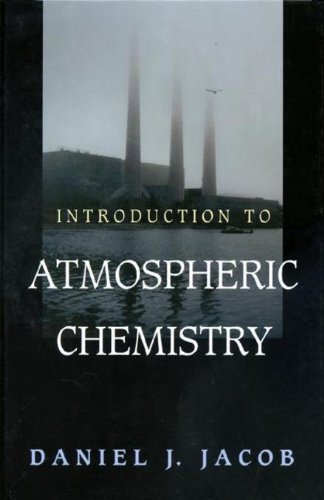Introduction to Atmospheric Chemistry



Product Description
Atmospheric chemistry is one of the fastest growing fields in the earth sciences. Until now, however, there has been no book designed to help students capture the essence of the subject in a brief course of study. Daniel Jacob, a leading researcher and teacher in the field, addresses that problem by presenting the first textbook on atmospheric chemistry for a one-semester course. Based on the approach he developed in his class at Harvard, Jacob introduces students in clear and concise chapters to the fundamentals as well as the latest ideas and findings in the field.
Jacob's aim is to show students how to use basic principles of physics and chemistry to describe a complex system such as the atmosphere. He also seeks to give students an overview of the current state of research and the work that led to this point. Jacob begins with atmospheric structure, design of simple models, atmospheric transport, and the continuity equation, and continues with geochemical cycles, the greenhouse effect, aerosols, stratospheric ozone, the oxidizing power of the atmosphere, smog, and acid rain. Each chapter concludes with a problem set based on recent scientific literature. This is a novel approach to problem-set writing, and one that successfully introduces students to the prevailing issues.
This is a major contribution to a growing area of study and will be welcomed enthusiastically by students and teachers alike.
</p>Introduction to Atmospheric Chemistry Review
I used Prof. Jacob's pre-press web edition of this book to teach 20+ bachelor's students Atmospheric Chemistry at the University of Copenhagen during the fall of 1999. I have found it difficult to find an appropriate introductory level text for this class, and have usually been borrowing material for the class from four or five other books. The book is well written and a pleasure to read, but the real treat are the problems at the end of each chapter. Jacob has scoured the literature and illustrates important points in each chapter using recent advances in the field. The students and their instructor learned a great deal from the author's insightful choice of topics. The book reflects the author's perspective of the field, and is longer on atmospheric physics and shorter on chemistry than the title implies. I would have liked more information on aerosols, and the students definitely would have liked more introductory material on chemistry. Overall I would recommend this book to professionals interested in learning more about global warming or ozone depletion, and to teachers looking for a good book for bachelors or new graduate students.Most of the consumer Reviews tell that the "Introduction to Atmospheric Chemistry" are high quality item. You can read each testimony from consumers to find out cons and pros from Introduction to Atmospheric Chemistry ...

No comments:
Post a Comment